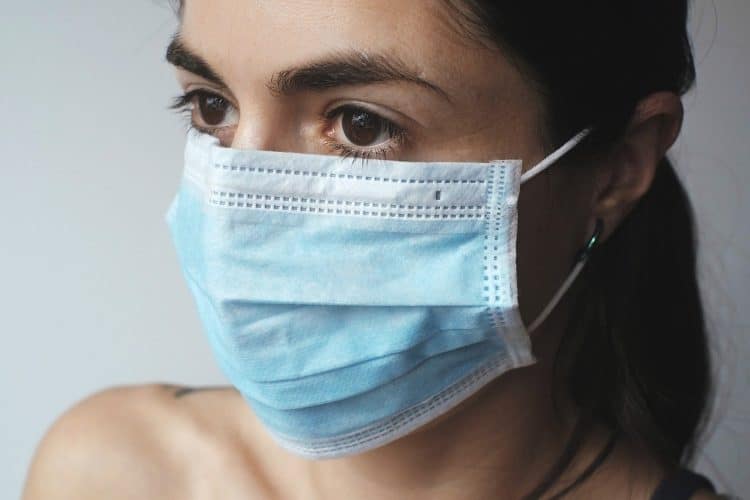In a lonely tower above the tree line, a lone sentry scans the horizon, looking for smoke. He’ll stay at his post for eight hours, until he’s relieved by a colleague, watching around the clock for evidence of wildfires. As Europe – and many other parts of the world – bake under a second unprecedented heatwave this summer, lookout towers and sentry posts across the continent have been activated. This old-fashioned approach has been in use for centuries, but as temperatures rise, today’s fire sentries are backed by very modern technology.
Newspaper front pages this summer have been adorned with images of a continent turned yellow as grass dries up across Europe. Similar satellite pictures have shown the spread of wildfires, which have caused record damage in 2022. These pictures provide early warning of problems, help to track the spread of fires, and teach us about how they are caused and can be contained.
Optical sensors distributed across towers in countries like Germany analyse the air for smoke particles to geo-locate fires in remote areas. In Europe, the EU’s Forest Fire Information System (FFIS) shares accurate and reliable information between member states.
Even as Europe is scorched in the heat, though, this later summer heatwave masks the fact that a new but familiar threat is re-emerging. The presence of a new Omicron variant of Covid-19, which is three times more likely to put you in hospital than its previous strain, is here to mix things up. It will take a similar mix of traditional approaches and new technology to combat a new surge in Covid infections.
The World Health Organisation (WHO) has warned of a difficult autumn and winter in the middle of a summer surge of Covid-19 cases and decreased surveillance among states. Just as the EU shares information on forest fires, to prepare for an intense season of illness, it is important to monitor the path of the virus and possible new variants as this will inform any change that is needed for public health advice.
New figures show that the number of people with a higher level of Covid-19 antibodies is decreasing swiftly. Many countries are not providing effective testing programmes for Covid-19 in the upcoming autumn which is concerning since the virus still poses a serious threat.
While some countries are not imposing any kind of restrictions for the future, a handful of countries have taken various approaches to prepare for the upcoming season. Just as countries introduce fire and drought protocols in the face of hot and dry weather, in anticipation of a new wave of Covid, Germany is making masks mandatory for long-distance travel from October to April while Serbia is monitoring virus mutations for effective Covid-19 control in their first ever genome sequencing centre.
Like satellites for wildfires, genomics has turned out to provide valuable technology to tackle highly infectious diseases. Genomic research has been central to understanding and combating Covid-19 pandemic. Being able to detect new variants at an early stage is crucial for stopping the spread of infection – genomic sequencing of new Covid-19 variants can be completed within 48 hours which is essential to treat patients accordingly as well as to engage in more effective public health measures.
BGI Group, one of the first organisations to visit Wuhan in the earliest days of the pandemic and contribute to sequencing the genome of the virus, went on to be the first organisation to detect Omicron in both Sweden and Saudi Arabia.
GISAID, which provides open access to virus data across borders, draws on data from a network of laboratories and public-health institutions in 123 countries. GISAID acts as an international early warning system for flu and coronaviruses, just as the FFIS does for wildfires.
Developments in genomic surveillance have allowed near real-time data on viral evolution, transmission dynamics, and vaccine efficacy to name a few. Genomic sequencing decodes the genes in the SARS-CoV-2 genome to tell scientists which variant is present in the specimen. This allows the identifying of ‘super-spreaders’ and understand behaviours that spread Covid-19.
BGI Group has also helped countries across the world to step up their Covid surveillance. Early in the pandemic, BGI Group deployed state-of-the-art “Huo-Yan” testing laboratories to more than 90 countries and regions as diverse as Ethiopia, Brunei, and Tanzania to help dramatically increase in-country testing capacity.
Acting like the wildfire lookout towers dotted across Europe, testing laboratories combine with more advanced approaches like intense genomic sequencing of virus samples, tweaking vaccines to reflect a mutating virus, and information sharing across borders through groups like GISAID. This combination of approaches, backed by genomic technology, is what will give us the edge in fighting Covid and the new Omicron variant this flu season. As with wildfires, however, we will need to remain vigilant and move with the times, learning from each outbreak how we can best treat, recover from and prevent the next.

